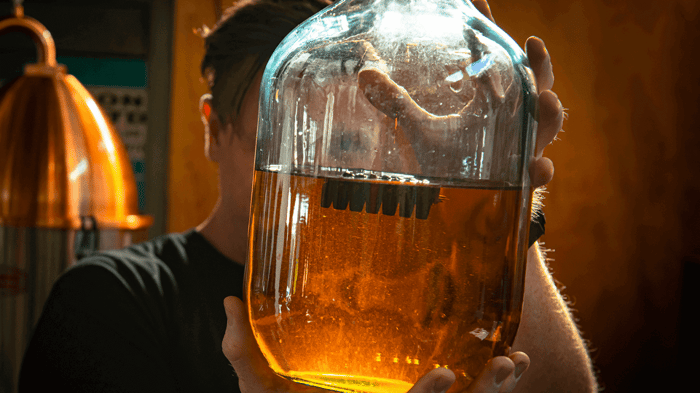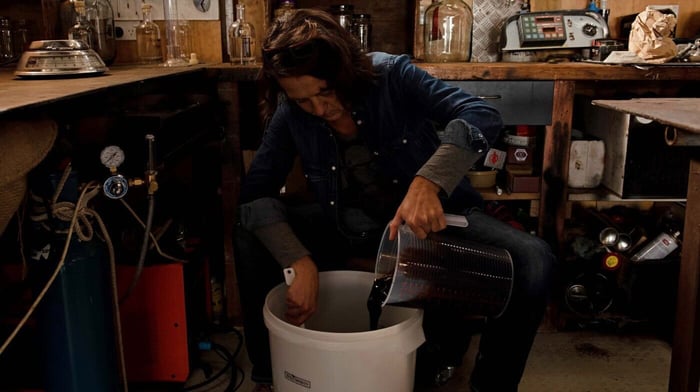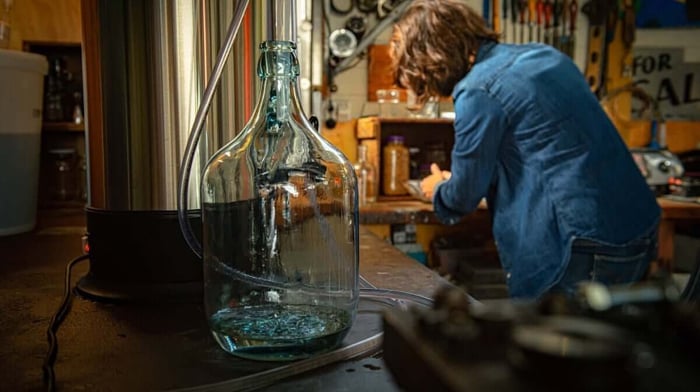Learning how to blend cuts is an important step in crafting your spirit after distillation. Blending cuts is the process where you'll assess the distillate you've collected in jars (see our article on how to take cuts) and carefully curate the ones you want to add to your final product. It's a process that requires a bit of patience and a bit of practice.
Once you've taken your cuts during your spirit run, we then suggest you let the jars air out for 24 hours for the more volatile aroma compounds to dissipate. This can be done by covering them with a thin type of material, such as muslin cloth, being careful it does not dip into the jars. Once the 24 hours is up, line all your jars up from beginning to end and get ready for the fun to begin, because this is where you get to choose exactly what goes into your drink!
Take this time to waft a few of the jars towards your nose - just don't stick your nose into the jar as you may be met with some very strong and potent aromas. Try smelling a middle jar, then the first, and then the last – take note of the difference in aroma between them all.
Once you have an idea of what smells good to you, and what doesn't, start selecting what you want to keep. Typically, it’s easier to start from the middle (the hearts) and work your way out. Put aside the jars you don't select. Use your sense of smell first and if you want to give it a taste, place a drop or two onto a teaspoon and dilute it with a few drops of water so you can get a better idea of what it tastes like. Once you have selected your jars, combine the contents into a larger vessel and check the ABV.
Now that your cuts have been blended, the next steps will depend on the type of spirit you're making. If it’s a gin, it's time to dilute the combined distillate down to drinking level (typically 39-42% ABV) and let it rest for a week or so to settle out prior to enjoying. If, on the other hand, you’ve made a dark spirit such as rum or whiskey (although, it won’t be dark yet), it’s time to prepare for your ageing and oaking steps. These steps will contribute colour and flavour to your final product. Find out more in our article How to Age Alcohol After Distillation.
What about those other jars that didn’t make the cut? Fear not, this isn't wasted alcohol! Keep these aside in a separate and clearly marked container, and then add these back to another spirit run to further refine and extract better tasting portions from them. Remember to keep like spirits together - rum leftovers probably won’t go well with bourbon leftovers!
What’s Next?
While you wait patiently for your spirit to age, make use of the time, and distill a few more batches! Once your spirit is oaked and aged you’ll be tempted to sit back and enjoy the product of your hard work. You certainly can, however, it can pay off wait until other batches are ready so you can blend them.
You can simply blend the batches to taste, after all, it’s you who will be enjoying it. Sample the batches individually, then try blending a small amount of a few together and see what you think. If you find a blend you like, then simply increase the proportions to the desired amount.
Many commercial spirits are blended. There are different regional laws around the globe that define labelling requirements, so spirits that state their age on the bottle, may contain spirit aged for different periods.





